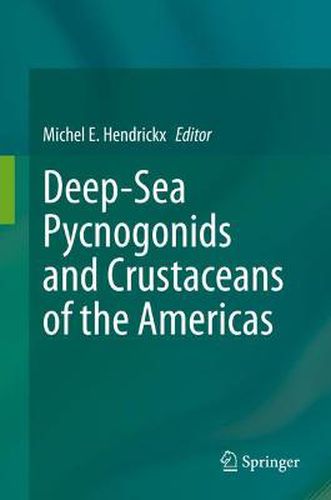Readings Newsletter
Become a Readings Member to make your shopping experience even easier.
Sign in or sign up for free!
You’re not far away from qualifying for FREE standard shipping within Australia
You’ve qualified for FREE standard shipping within Australia
The cart is loading…






This title is printed to order. This book may have been self-published. If so, we cannot guarantee the quality of the content. In the main most books will have gone through the editing process however some may not. We therefore suggest that you be aware of this before ordering this book. If in doubt check either the author or publisher’s details as we are unable to accept any returns unless they are faulty. Please contact us if you have any questions.
Among the deep-sea marine invertebrates, pycnogonids and crustaceans represent ecologically important and most diverse groups of species. Yet both are still poorly understood. Sampling and exploring operations off the west and east coast of the Americas has significantly increased in the last two decades. However such operations are very costly and limited in number and frequency. In countries like Brazil, Canada, Chile, Colombia, Costa Rica, Mexico, Peru, the United States of America, and El Salvador a large effort has been made to explore the deep-sea resources and the rich diversity of the communities, resulting in a better understanding of the natural ecosystems on both coasts of America. Pycnogonids and many groups of deep-sea crustaceans have been intensively studied, from the smallest animals, like the mostly unknown benthic copepods to the largest decapods.
This book presents new and updated information on various groups of deep-sea pycnogonids and crustaceans occurring off the American continent. Offering a valuable reference resource for scientists interested in this fascinating fauna, it includes review papers and new data on the deep-sea communities occurring off the USA, Mexico, El Salvador, Costa Rica, Colombia, Chile, Peru, Brazil and Argentina, as well as in larger areas in both the East Pacific and the West Atlantic. As such it covers most of the current deep-water research in Latin America.
$9.00 standard shipping within Australia
FREE standard shipping within Australia for orders over $100.00
Express & International shipping calculated at checkout
This title is printed to order. This book may have been self-published. If so, we cannot guarantee the quality of the content. In the main most books will have gone through the editing process however some may not. We therefore suggest that you be aware of this before ordering this book. If in doubt check either the author or publisher’s details as we are unable to accept any returns unless they are faulty. Please contact us if you have any questions.
Among the deep-sea marine invertebrates, pycnogonids and crustaceans represent ecologically important and most diverse groups of species. Yet both are still poorly understood. Sampling and exploring operations off the west and east coast of the Americas has significantly increased in the last two decades. However such operations are very costly and limited in number and frequency. In countries like Brazil, Canada, Chile, Colombia, Costa Rica, Mexico, Peru, the United States of America, and El Salvador a large effort has been made to explore the deep-sea resources and the rich diversity of the communities, resulting in a better understanding of the natural ecosystems on both coasts of America. Pycnogonids and many groups of deep-sea crustaceans have been intensively studied, from the smallest animals, like the mostly unknown benthic copepods to the largest decapods.
This book presents new and updated information on various groups of deep-sea pycnogonids and crustaceans occurring off the American continent. Offering a valuable reference resource for scientists interested in this fascinating fauna, it includes review papers and new data on the deep-sea communities occurring off the USA, Mexico, El Salvador, Costa Rica, Colombia, Chile, Peru, Brazil and Argentina, as well as in larger areas in both the East Pacific and the West Atlantic. As such it covers most of the current deep-water research in Latin America.